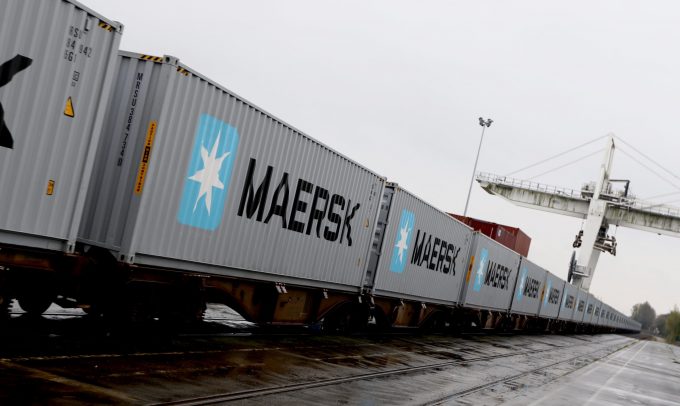Maersk Frankfurt heads for open water as container fire subsides
Maersk Frankfurt, the newbuild box ship that suffered a possible electrical fault and subsequent container ...
TFII: SOLID AS USUALMAERSK: WEAKENINGF: FALLING OFF A CLIFFAAPL: 'BOTTLENECK IN MAINLAND CHINA'AAPL: CHINA TRENDSDHL: GROWTH CAPEXR: ANOTHER SOLID DELIVERYMFT: HERE COMES THE FALLDSV: LOOK AT SCHENKER PERFORMANCEUPS: A WAVE OF DOWNGRADES DSV: BARGAIN BINKNX: EARNINGS OUTODFL: RISING AND FALLING AND THEN RISING
TFII: SOLID AS USUALMAERSK: WEAKENINGF: FALLING OFF A CLIFFAAPL: 'BOTTLENECK IN MAINLAND CHINA'AAPL: CHINA TRENDSDHL: GROWTH CAPEXR: ANOTHER SOLID DELIVERYMFT: HERE COMES THE FALLDSV: LOOK AT SCHENKER PERFORMANCEUPS: A WAVE OF DOWNGRADES DSV: BARGAIN BINKNX: EARNINGS OUTODFL: RISING AND FALLING AND THEN RISING

Maersk has seen a 30% uptick in rail freight volumes in India during the country’s coronavirus lockdown.
But some local forwarders aren’t convinced rail services can challenge road’s predominance.
India’s lockdown began 72-days ago, triggering a raft of supply chain disruption via grounded flights, overzealous policing and an exodus of truck drivers from major cities.
“Trucks were abandoned by drivers who rushed back to their home towns,” Maersk said, adding it had then become a “herculean task” to find truck capacity for export cargo.
As a result, Maersk laid on extra rail services for customers that included some of India’s largest petrochemical companies and automotive manufacturers.
“[The] solution included moving goods from the exporters’ manufacturing facilities by rail to the required port, or moving the cargo first to the closest inland container depot (ICD) by road and then loading it onto rail,” the carrier explained.
However, some local forwarders questioned whether rail could make big inroads in hinterland transport.
Rakesh Pandit, co-founder and CEO of Conbox Logistics, said container carriers were “aggressively marketing” their rail services for inland haulage.
“But they haven’t received a great response,” he told The Loadstar.
“Importers and exporters are well-aware of the pros and cons of rail. Rail still doesn’t resolve the issue associated with last-mile connectivity between ICDs and factories, and freight rates remain high on various routes.
“Furthermore, the railways don’t support hazardous, reefer or overdimensional cargo, which again discourages many shippers.
“Lastly, shipping lines charge GST at 18% on rail services, compared with paying 5% or 12% GST for road freight, which is a big saving.”
“There is no official data on container volumes handled by carriers through rail. But, if you ask me, it has not made any huge impact,” claimed Mr Pandit.
And there is now more truck capacity available in the market, according to Mr Prakesh, who noted the situation had “normalised a little” over the past 30 days.
“Rates are still high,” he added. “And industry demand is low, as most factories are still working around 50% or below their capacity.”
Steve Felder, managing director of Maersk South Asia, said India’s port congestion had “vastly improved”, given the current lower throughput of exports and imports.
“Throughout the lockdown, we encouraged and offered our customers the option of evacuating import cargo on rail, which has played out positively,” he explained.
India’s container trades remained stable during the early stages of the crisis, Mr Felder said, as volumes were balanced out between lower imports from Asia and higher exports to the west.
“However, we observed a sharp decline in volumes as the pandemic moved west, and demand in those markets reduced, coupled with supply side challenges in India during the lockdown. The overall picture and impact still remains unclear as we sail through rather fluid conditions,” he added.
Comment on this article